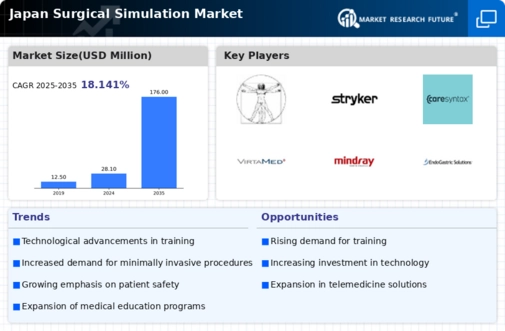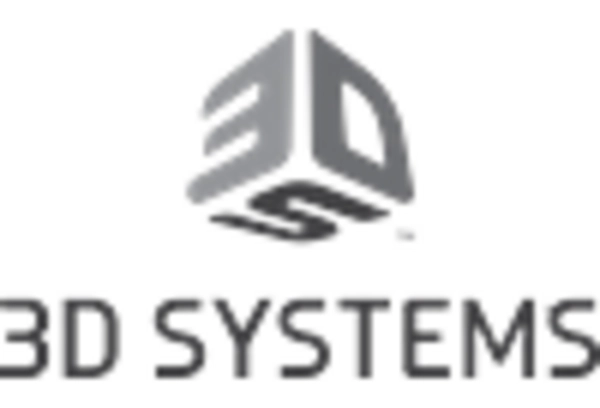Growing Emphasis on Patient Safety
The surgical simulation market is increasingly influenced by the growing emphasis on patient safety. As healthcare providers strive to minimize surgical errors and enhance patient outcomes, the need for comprehensive training solutions becomes evident. Surgical simulations allow practitioners to refine their skills and decision-making abilities in a controlled setting, thereby reducing the likelihood of complications during actual procedures. This focus on safety is reflected in the rising adoption of simulation-based training programs. Data suggests that institutions implementing such programs have reported a reduction in surgical errors by up to 30%. Consequently, the surgical simulation market is poised for growth as more organizations prioritize patient safety through effective training.
Collaboration Between Academia and Industry
Collaboration between academic institutions and industry players is emerging as a vital driver for the surgical simulation market in Japan. These partnerships facilitate the development of innovative training solutions that meet the evolving needs of healthcare professionals. By combining academic research with practical applications, stakeholders can create cutting-edge simulation technologies that enhance surgical education. Recent initiatives have seen universities and medical device companies working together to design tailored training programs, which are expected to improve the quality of surgical training significantly. This collaborative approach not only fosters innovation but also ensures that the surgical simulation market remains aligned with the latest advancements in medical technology.
Integration of Virtual Reality Technologies
The integration of virtual reality (VR) technologies into the surgical simulation market is transforming the landscape of medical training in Japan. VR offers immersive experiences that enhance the learning process, allowing surgeons to practice procedures in a realistic yet risk-free environment. This technology not only improves skill acquisition but also boosts confidence among trainees. As the demand for high-quality surgical education rises, institutions are increasingly adopting VR-based simulations. Reports indicate that the VR segment within the surgical simulation market is expected to grow significantly, with estimates suggesting a market size of over $200 million by 2027. This trend highlights the potential of VR to revolutionize surgical training and improve patient outcomes.
Rising Demand for Minimally Invasive Procedures
The surgical simulation market in Japan is experiencing a notable increase in demand for minimally invasive surgical techniques. This trend is driven by the advantages these procedures offer, such as reduced recovery times and lower risk of complications. As healthcare providers and patients alike seek to minimize the physical impact of surgeries, the need for effective training tools becomes paramount. Surgical simulations provide a safe environment for practitioners to hone their skills in these complex techniques. According to recent data, the market for minimally invasive surgeries in Japan is projected to grow at a CAGR of approximately 8% over the next five years. This growth directly influences the surgical simulation market, as more healthcare institutions invest in advanced training solutions to prepare their staff for these evolving surgical methods.
Increased Investment in Healthcare Infrastructure
Japan's commitment to enhancing its healthcare infrastructure is a critical driver for the surgical simulation market. The government and private sector are channeling substantial investments into healthcare facilities, aiming to modernize equipment and improve training methodologies. This influx of capital is likely to facilitate the adoption of advanced surgical simulation technologies, which are essential for training healthcare professionals. Recent statistics indicate that healthcare spending in Japan is projected to reach approximately $500 billion by 2026, with a significant portion allocated to training and education. As hospitals and medical schools upgrade their facilities, the demand for surgical simulations is expected to rise, thereby fostering growth in the market.

















Leave a Comment